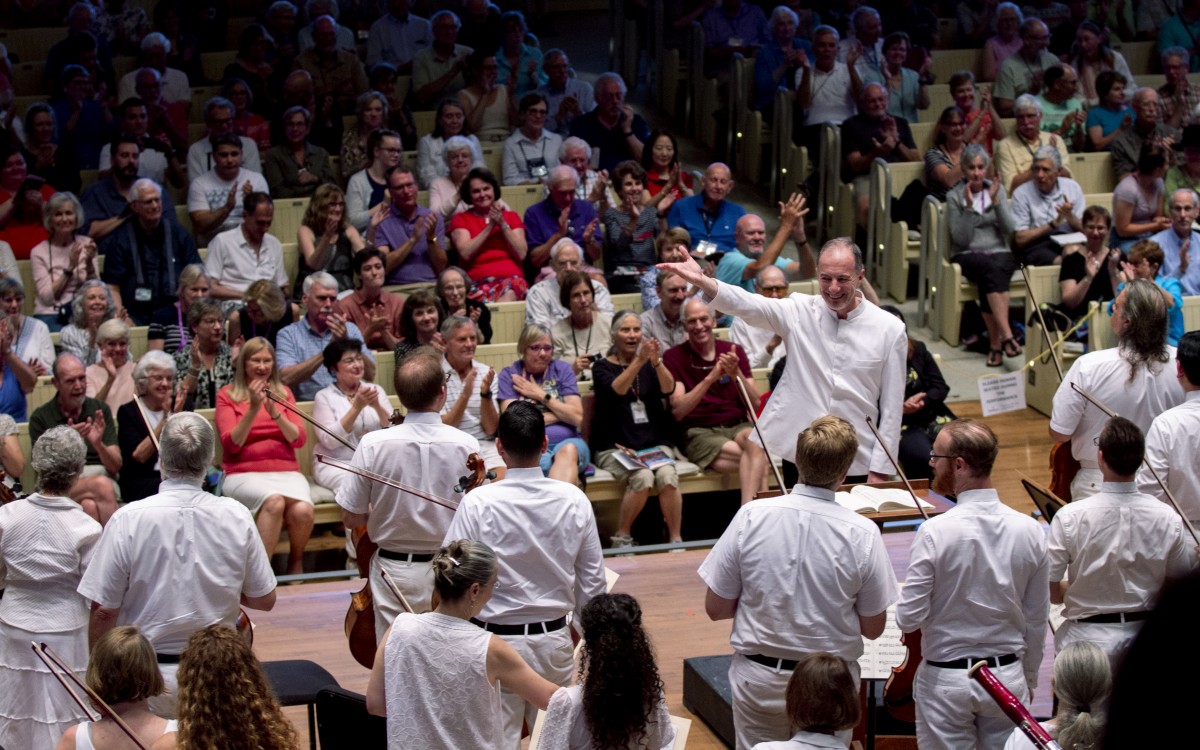In the Chautauqua Symphony Orchestra’s latest concert, two famous Romantic masterpieces will take center stage — and orchestra members hope to show just how well the pieces work together.
“A Saturday Evening of Symphonies” will take place at 8:15 p.m. Saturday in the Amphitheater. The concert features Franz Schubert’s Symphony No. 8 in B minor, D. 759, “Unfinished,” and Johannes Brahms’ Symphony No. 3 in F major, op. 90.
The two composers shared a background in 19th-century Romantic music, a movement that embraced individuality, imagination and emotion. CSO Conductor and Music Director Rossen Milanov said the composers exemplify the Austro-German Romanticism of their era.
“We have these two composers who are sharing some melodic DNA, which perfectly represents the tradition of the Romantic symphonic music of the 19th century,” Milanov said. “There’s an extra layer of meaning to the songs. That melodic quality finds its wonderful representation in these two works by Schubert and Brahms.”
The first piece of the concert, Schubert’s “Unfinished,” is a symphony in only two movements — distinct parts of a symphonic piece. As most 19th-century symphonies included four movements, “Unfinished” is starkly different from the norm. Milanov said that while the symphony is somewhat of a mystery, it is famously well-balanced.
“We don’t know exactly why it’s composed of only two movements, whether (Schubert) had any plans to add the standard two additional movements to make it a four-movement symphony,” Milanov said. “But both musicians and musicologists agree that this work has such perfect proportions, such perfect balance between the opening movement and the second movement.”
While “Unfinished” is different from most of its contemporaries, Milanov said it remains an exemplar of the era.
“It has found its rightful place as one of the masterpieces of the Romantic repertoire for orchestra,” Milanov said.
Brahms’ Symphony No. 3 is another classic masterpiece of Romanticism. Like Schubert’s “Unfinished,” the piece deviates from the 19th-century norm; it does not feature a dramatic, climactic ending. Milanov said the piece’s ending is nontraditional but beautiful.
“It’s a little bit off compared to his other symphonies in that it seems to be going in a very anticlimactic finish, which is not typical for the great symphonies of the time,” Milanov said. “But here, the motion is in the opposite direction. It starts with a very powerful beginning and submerges — goes away in a way that is very quiet and beautiful.”
Milanov said the pieces’ nontraditional aspects work together, creating a concert of different but complementary styles.
“You’re going to get two symphonies that have very peaceful, very serene endings,” Milanov said.
First violinist Lenelle Morse has performed with the CSO for 27 seasons. In her experience, most concerts feature a guest soloist — unlike Saturday’s performance. However, Morse said that CSO-only performances are a unique chance to fully experience the orchestra’s talents.
“It’s unusual that there’s no soloist,” Morse said. “So it’s a wonderful chance to see the CSO shine on its own, which it wonderfully does and which it’s done for so many years.”
Morse said that symphonies like those to be performed Saturday deeply engage listeners, bringing them into the creative elements of the music.










